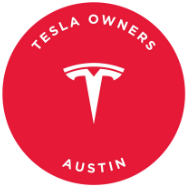The electric vehicle charging power war in China is heating up as Zeekr and Huawei announce chargers capable of delivering over 1,000 kilowatts of power. Zeekr, a Geely-owned carmaker, has unveiled chargers that can supply up to 1,200 kW (1.2 megawatts) of power, surpassing the previous record set by BYD. These ultra-fast chargers can charge a 7X SUV from 10 to 80% state of charge in just over 10 minutes, making them some of the most powerful chargers in the world.
However, Zeekr won’t hold the title for long as Huawei is set to release a charger capable of delivering 1.44 MW of power (rounded out to 1.5 MW). This charger, to be revealed on April 22, promises to add 20 kWh per minute and charge a passenger EV battery from zero to 100% in just 15 minutes. Huawei aims this charger at trucks and heavy-duty applications with larger batteries that require minimal charging downtime for productivity and commercial viability.
While China leads the way in EV charging power, the question arises whether such high-powered chargers are necessary for regular passenger cars. The complexity and cost of these chargers may outweigh the benefits, especially considering that most passenger EVs don’t require such high charging speeds. Western carmakers, for the most part, are content with delivering sub-300-kW-charging EVs that take between 20 and 30 minutes to reach 80% charge.
Other Chinese companies are also in the race, with Li Auto, Nio, and Xpeng unveiling chargers with capacities ranging from 520 kW to 800 kW. In comparison, the most powerful charger in the western hemisphere is Tesla’s 500-kW V4 Supercharger, set to be rolled out in 2025. Tesla also has plans to introduce 1.2-MW chargers for its Semi trucks, highlighting the global push towards faster charging speeds.
While China may be leading the charge in EV charging power, the practicality and necessity of pursuing 1 MW charging for regular passenger cars remains a topic of debate. As technology continues to evolve, it will be interesting to see how the EV charging landscape develops and whether these high-powered chargers become the new standard for electric vehicles. It seems that the competition among Chinese automakers is heating up, with each company vying for bragging rights and market dominance. While some may argue that this competition is driven by a desire to innovate and push the boundaries of automotive technology, it may also be fueled by a need to establish superiority and gain recognition in the industry.
Chinese automakers have been making significant strides in recent years, with companies like Geely, BYD, and NIO gaining international attention for their electric vehicles and autonomous driving technology. This has led to a sense of rivalry among these companies, as they compete to outdo each other and prove their worth in the global market.
One of the key driving forces behind this internal competition is the Chinese government’s push for the development of electric vehicles and sustainable transportation solutions. With strict emissions regulations and a growing demand for clean energy vehicles, automakers are under pressure to innovate and stay ahead of the curve.
In addition, the sheer size of the Chinese market means that there is a lot at stake for these companies. With millions of potential customers up for grabs, automakers are eager to position themselves as leaders in the industry and capture a significant share of the market.
Ultimately, while the competition among Chinese automakers may be driven by a desire for recognition and market dominance, it is also pushing the industry forward and driving innovation. As these companies continue to push the boundaries of what is possible in automotive technology, we can expect to see even more exciting developments in the years to come.

